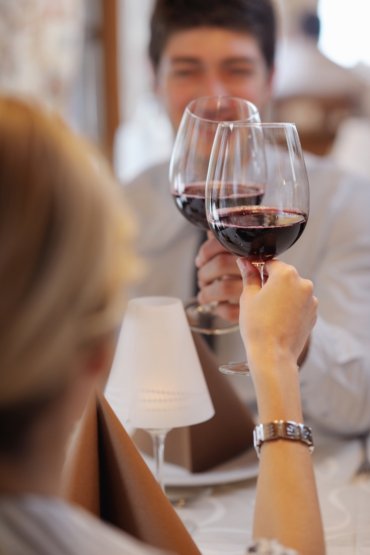 “I eat, therefore I am.” Descartes didn’t say that—I stole it from him and paraphrased just a bit. As a pithy epigram it’s true in so many ways. But the one that concerns me, and what I know for certain, is great meals make great memories.
“I eat, therefore I am.” Descartes didn’t say that—I stole it from him and paraphrased just a bit. As a pithy epigram it’s true in so many ways. But the one that concerns me, and what I know for certain, is great meals make great memories.
The link between the two is so far beyond historic that I’ve started to wonder if the cave paintings of Dordogne were some form of ancient menu. Who knows?
We do know for certain that some of the earliest writing contains recipes. Most important among these clay-tablet, jottings was the very first recipe for beer. Desert dust never got the chance to collect on Hammurabi and his swinging Mesopotamians.
If you drop a nickel into the Way Back Machine you’ll also discover that in ancient Greece, the citizens of Athens were always partying around their food. They even had a name for their soirées (which, because of Greek hydro bills, were held in daylight hours) and Plato adopted it for one of his books.
The Greeks were always great talkers and sometimes, good thinkers. After the main course, the serious drinking and thinking would begin. More often than not, the subject under discussion was the human condition and how physical and spiritual love affected it.
Socrates, the Hellenic forerunner of Hunter S. Thompson, hung out at these gatherings bending the ear of anyone who would listen to him. In the end, that got him into a little more trouble than he bargained for and even if the name for these parties, “symposiums,” survived—he didn’t.
If any of your university prof’s can translate “I love you, man” into classical Greek, then you know what they’re actually doing whenever they slink off to a symposium.
Not to be outdone, the citizens of the Italian Peninsula developed a pretty good reputation for raging. Interestingly though, it wasn’t the ancient Romans who whooped things up to the extreme, it was their ancestors the Etruscans.
Next time you want to amaze your friends, instead of throwing a Roman orgy, try an Etruscan wall-shaker. They featured exotic dishes like roast flamingo and thrush kebabs accompanied by Spanish dancing girls. (I think a few dancing boys got tossed into the mix as well.) In later years, the powers that be even censored the more raunchy Etruscan tombs.
Today, we’re a little more sedate. At my point in life I can do with a little less of the dancing girls and a little more splendour of a well-laid table.
Recently I inventoried my most memorable meals. Their locales range from New Zealand to New York and Sydney to Dubrovnik. More than one was right here in the Valley. But I’ve concluded that my fave of all time was in a mountaintop village midway between Monaco and Nice.
The Chateau de la Chevre d’Or sits in the ruins of a fortress nearly 500 metres above the Med in the village of Eze. The meal began with oysters Rockefeller and wound its way through brilliantly braised lamb medallions followed by a chariot de fromage with what seemed like a hundred different regional cheeses on it. It wrapped up with tartes au citron and dark, delicious café espresso.
Needless to say, it was all washed down with copious quantities of velvety Côtes du Rhône.
Aside from the splendid views of the Riviera, what made the meal memorable was the companionship. My date was a young lady from New York whose brother had a leading role in a televised space opera. Other guests included an insanely funny Brit, with probably the world’s ugliest bow tie (a handicap he overcame with charm), and five equally interesting men and women who were great conversationalists.
Lunch lasted well into the evening.
Here in the Valley it’s summer. My advice is to relax and take advantage of the season. Get out to dine with friends and make some grand memories of your own.



0 Comments